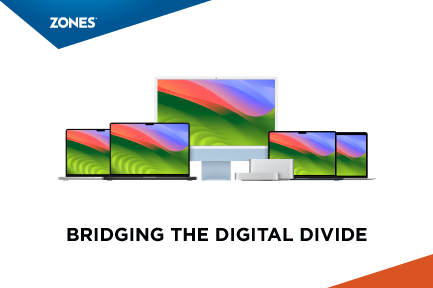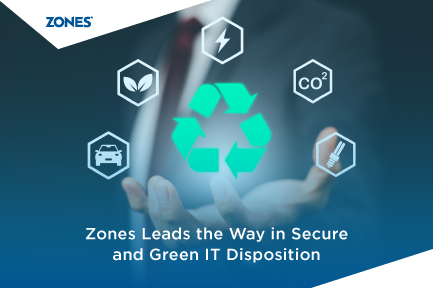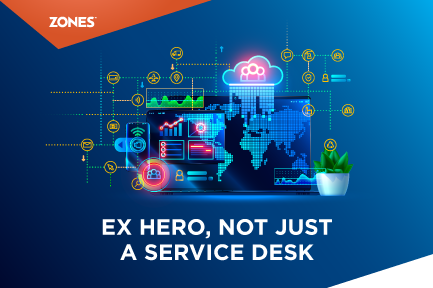Strategic Expansion Enhances IT Asset Disposition
Zones has extensively invested in its IT Asset Disposition (ITAD) capabilities in recent months to satisfy the growing demand for safe, compliant,...

Around the world, millions of people rely on the internet for work. Whether completing job tasks, writing a thesis, or staying in touch with friends and family, digital technologies and the internet hold the keys to countless opportunities. However, not everyone has equal access to the internet—or any access at all. Roughly 7% or 23M Americans fall into this category.
This is the ‘digital divide.’ In simple terms, the digital divide is the gap between those with internet access and those without it. It relates to the increasing social differences created by reliance on technology, the internet, and other advanced developments.
The digital divide often exists between:
Even within populations that have some access to technology, the divide persists. It's not just about having no internet access at all; it's also about having lower-performance computers, slower wireless connections, and limited access to high-speed internet.
Social Reasons
Wealthier people generally have more and better access to technology and the internet. The digital divide widens existing income and education gaps, deepening socioeconomic inequalities.
Age Gap
While the younger generation seems up to date with the latest tech trends, 44% of people over 65 don’t have access to the internet, often due to poor education about its benefits and lifestyle situations that don't demand connectivity.
Urban areas have complete internet coverage, while rural regions often lack high-speed access.
This digital disparity is often a result of racial, cultural, and language differences. Non-English-speaking families, for example, may struggle with online resources that aren't available in their language.
Some people simply choose not to use the internet due to a lack of interest or awareness of its benefits.
The digital divide is only going to create further barriers unless organizations develop solutions to bridge these inequalities. Fortunately, Apple has taken significant steps toward closing this gap. Many agencies now prefer Apple because of its industry-leading accessibility features that are seamlessly integrated into their design.
Apple offers built-in accessibility features, including voice search, vibrating alerts, hover text, hearing aids support, detection mode, and speak screen. These empower users to connect, create, and enjoy activities that suit their needs. For instance, a WebAIM survey of over 1,500 users with vision disabilities revealed that 71% rely on iPhone or iPad with VoiceOver, from Apple, as their primary mobile platform.
Apple has also curated a trusted collection of apps tailored for older adults and people with disabilities, enhancing their quality of life by facilitating easy access to beneficial applications.
All these features highlight one thing: Apple is committed to closing the digital divide and ensuring everyone can access and benefit from the latest technology.
If you're a public sector agency and want to upgrade to Apple devices and help bridge this divide, Zones is your best bet. With Zones' Digital Workspace Solutions, you'll have a team of dedicated professionals who understand your business and are invested in your growth. Zones handles everything from on-prem IT infrastructure and inventory management to deployment management.
As a proud Apple partner, Zones works every day to help clients seamlessly integrate Apple into the workplace. To learn more, connect with a Zones Account Manager today.

Zones has extensively invested in its IT Asset Disposition (ITAD) capabilities in recent months to satisfy the growing demand for safe, compliant,...

In the past few years, the definition of the workplace has gone beyond the physical location to virtual space. With the shift from fully remote to...

Imagine your organization preparing to launch a new global initiative—hundreds of workstations must be imaged, kitted with peripherals, and delivered...